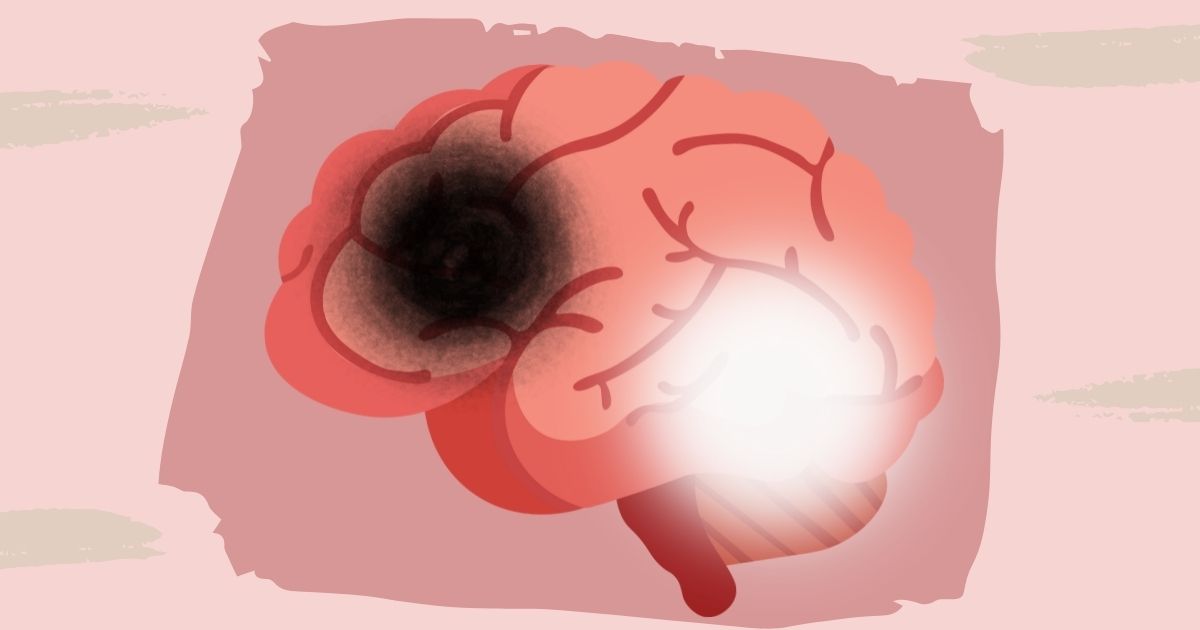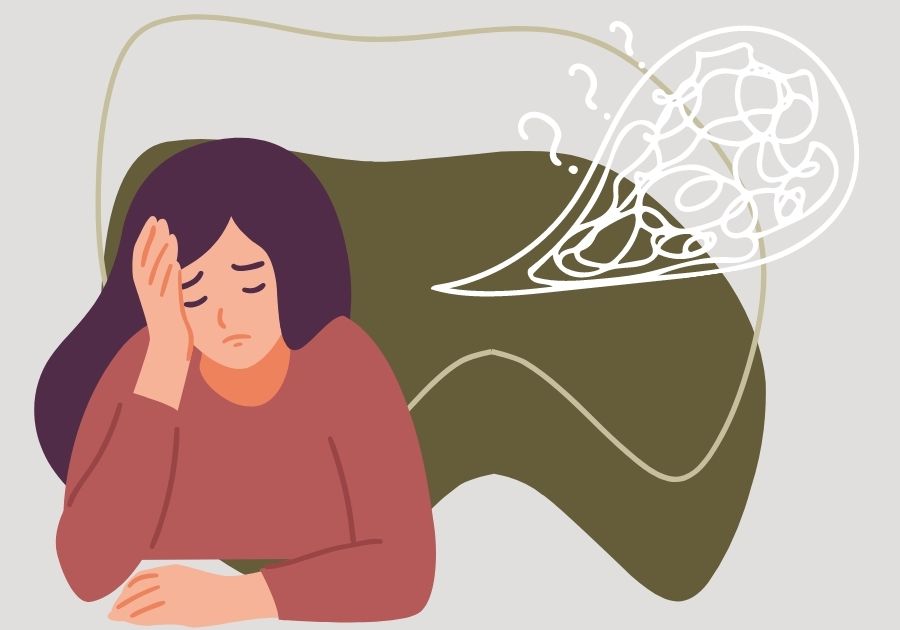Do you find yourself trapped in binary thinking? Are you looking for reasons you feel so much disappointment from situations that didn't work as planned?

Summary of contents
1. What is black and white thinking?
2. Can black and white thinking be useful?
3. Examples of Black And White Thinking (also known as dichotomous thinking)
4. What are the six things that can go wrong if you think black and white?
5. How To Break Free From Your “Black and White” Mindset
6. In conclusion
What is black and white thinking?
According to psychologists, one of the most common ways of thinking that mentally strains people is white or black. Thought becomes bipolar: it is either one thing or the other; "all or nothing," "good or bad," "beautiful or ugly," and so on. Black and white thinking is a kind of thought which tends to separate and categorize things. We make decisions based on a belief that something is either “right or wrong.”
When you’re having trouble focusing on what you need to do to solve a problem, you’re often caught up in a “black and white” mindset. You get stuck thinking about things only in absolutes—whether a situation is good or bad, whether a person is a friend or foe. Your thinking gets clouded by all the extreme scenarios in the real world. “The trick to staying focused is to get out of this black and white thinking.”

Can black and white thinking be useful?
There are times when the black and white way of looking at things can seem beneficial in life. These cases are as follows:
It can save you from over-analysis
We often tend to overthink the evolution of a situation. We analyze all possible scenarios in-depth with the result that we get lost and make things more complicated than in our minds. The black and white thought pattern can make you avoid this chaos and think much more simply and not at all aggravating about your mental state.
From thought to action
About the above fact, it is much easier to take action on a goal when you avoid hyper-analysis. This self-activation makes you move on to practice and often to the essential part of an issue. For example, not getting lost in the thoughts of the pros and cons of whether you should attend a free seminar or not, and instead of taking action, following the seminar brings you face to face with the issue itself. So instead of being in the passive state of thought, you move on to the active part. The action itself, in fact, and our subsequent judgment has many times many more to tell us.

Fast selection means faster response
Choosing between two opposite things means a quicker way of deciding as they do not have many items to compare but two. Avoiding complexity means saving time: saving time means faster evolution of the choice we made, and therefore we accept the results of our selection much faster.
Examples of Black And White Thinking (also known as dichotomous thinking)
This man is bad
This choice of mine will lead me to disaster.
Their treatment was perfect; any mistakes are not due to them
The competition will go awry, and I will fail
I am so good that there is no way I can lose the match
I will not go out on a date with this man because I'm sure we do not fit in at all
Even if I go out today, I will not have a good time
What are the six things that can go wrong if you think black and white?
1. Limitations in your way of thinking
When your thinking is either black or white, it can limit your thoughts. The person with such a mindset might be narrow-minded, lacking diversity and complexity in their way of thinking.
Such a way of thinking can limit a person's prospects; even their ability to evolve is questioned. The individual remains stagnant, possessing outdated ways of thinking and an absolute attitude towards things. We become headstrong and restrictive beings without the disposition for fruitful discussion with arguments and controversies by thinking black and white. The absence of diverse and global thinking influences our life decisions about our ambitions and goals, such as our interactions with others.

2. Over-simplification of situations
You oversimplify the situation when you have a ladder, and you see the two ends, and there are no options in between. Binary thinking deprives you of the opportunity to see the complexity of a problem and come in contact with all those elements that shape it. You become more open-minded when you can see the complexity of a situation and think about it.
The simplification of a situation makes you more strict and demanding towards the conditions you have set. This happens because an issue in your head will take either the A or the B course! Assuming that you want the situation to take the B course, in case it takes the A, you cannot give space to other thoughts that can explain the fact of the A course, and thus, you strictly judge the performance in a situation.
3. Too much of something
Black and white thinking can fill you with a lot of things. Choosing a thought means an extreme focus on that thought, which overloads you and can easily throw you off.
Negative thinking about something, for example, can be too stressful for you and blur the field, making it impossible for you to see other elements of this thinking and manage a situation. Not being able to see the positive in the negative, but also the less good side of a favorable condition can fill you with many negative emotions.
4. You might be too selfish
You think you are right and that everyone else is wrong. Another thing that can be difficult with black and white thinking is that your beliefs tend to be held stubbornly, even in the face of the opposite. This leads to blind obedience to scripts and one-way viewing of things. It becomes even more difficult for his work to overcome your standard thoughts and to be open to thoughts from outside.
You believe that people should behave and think in a certain way because that is how you deal with things. Essentially, this highlights the thought that you are always right and others are wrong. Being so attached to a thought of your own can close you in on yourself and take you away from those around you.
5. Self-hate issues might appear
Believing so much in something leads you to form expectations for its evolution and outcome. When the black and white approach shapes your mind, you ignore a different development than you expect. And this is because you are sure that it will end one way, following one side of the binary scale.

You put your whole self into a decision or one of two points of view so much that you end up wholly discouraged if things do not go as expected. Of course, what follows is to put up with yourself because you did not perform as you expected. Instead, think of these as actions that you must take regularly, and recognize that there are other reasons why things may not work out as you expect, you feel guilty, you blame yourself, and you lose motivation for future endeavors.
6. You overestimate "perfection"
Usually, when you adopt a black and white way of thinking, you seem to be accepting only the perfection of choice. You think between two extremes, where one is perfect, and the other is the worst. You, obsessive with perfection and wishing for the perfect end, do not accept anything other than that; if it is not perfect, it will be the worst since there is nothing left when there are only two extremes in your mind.
This way, you do not accept the defects, flaws, and humanitarian elements present in every option. You live in a bubble of your own where everything is perfect, and nothing has "broken." So when you bet on perfection, and you do not achieve it, you cannot forgive yourself and love your fundamental aspects, as you would know if flaws are a part of everything in this world.
How To Break Free From Your “Black and White” Mindset
Most people are stuck in black and white thinking because they don’t know how to recognize when they’re doing it and how to stop it. Here are some suggestions you might follow to control the black and white way of thinking.
Self-observation
Νo change can be made without first determining what needs to be changed. So here, too, the key to changing the black and white way of thinking is to see exactly how your thoughts flow in your mind. Observing your thoughts makes it easier to recognize when your approach is absolute and you're moving between the two extremes!
Observing your thoughts can help you gain control over your mind. It is essential to find ways to make the observation easier and more effective. You can challenge yourself and say that you will observe your thoughts in phases on a particular day.
Black and white thoughts come when you need to make a decision - from the simplest to the most difficult - when you are reflecting upon a relationship of yours and more. In these moments, you can have this challenge in mind, and in order not to lose it, it would be good to record the sequence of your thoughts from one moment to the next on a piece of paper. After some time, when you will have been emotionally discharged from the specific situation that caused your thoughts, you will better understand your mind. In this way, you gain control of your mind, and you will be even more prepared next time in similar situations, keeping in mind to avoid these thoughts and replace them with other, more ... colored ones!
Appreciate gray!
Black and white thinking is a common misconception about thinking. We tend to think that we are either all-or-nothing thinkers or all-or-nothing non-thinkers. It turns out that there is a ''middle ground'', and the more you practice being a moderate thinker, the more you’ll get good at it.

The middle ground is a “gray thinking” mindset—where you don’t see problems in absolutes but instead as shades of gray. This means that an issue can have many different perspectives and that we have the opportunity, if we want, to see them all. The appreciation of gray also means that 'we have the chance to try all these different ways of thinking and see the changes they bring to our lives. We may not like all these ways, but at least we will keep the plethora of shades of thoughts in mind.
Learn to ''fail.''
When you are ready to accept to lose and fall out of a choice you have made, you get even further away from the black and white way of thinking. You learn that things can turn out very differently than you imagined and expected.
You learn to live with the possibility of failure, and you stop thinking altogether. The absolute way of thinking makes you have even more expectations about something that can go wrong. As a result, you can quickly get frustrated and take the different outcomes seriously.
If you can see that life is full of pleasant and unpleasant events that often coexist, separating them into successes and failures is absolute, you will leave behind the black and white way of looking at the world.
Be open to others' opinions
Being open to following a lesser path than you, thinking differently, to listen to the versions and experiences of others on an issue takes you one step further than the reasoning of black and white.
This can happen if you leave your selfishness behind and feel that you have seen and heard it all. It is essential to ask the opinion of people you trust about issues that concern you and ask for their help. This does not necessarily mean you should follow their advice, but it is an excellent source to see other aspects of an issue and get inspired to manage it.
Think more complicated; try scenarios that seem inaccessible to you, even if you are afraid that things will not go as you imagine. You never know what you will encounter by trying a version you never expected to try.
Very important: do not forget to ask your friends and other trusted people to see and judge the situation with your own eyes, that is, living it as if it were you. So, their tips will be more on point.
Focus on the things that matter
We are essentially encouraged to pay attention to things that usually remain in obscurity with this proposal. Things go wrong or not as you expect; it certainly has a life lesson for you. What is more important is to learn from a situation, to gain experience on it, rather than to confirm your expectations for it, as it's been previously mentioned.
Do not let yourself be consumed by the hours and re-examine a situation that, in the end, does not have so much influence on you or will not bring a lasting result. Save your mental health and pay attention to things that matter in a situation, such as what you get out of it.
Forgive yourself
Be more lenient with yourself, especially when you fall behind. Even if things take a different turn than you thought, remember that you did the best you could for the circumstances. Do not blame yourself, and do not fill yourself with guilt and anger. You deserve understanding and courage.

In conclusion
Binary thinking is simplistic and is often driven by fear. For example, it can mean that something is either true or false. It does not include or express the complexity of life. Life is a complex mixture of different qualities, both good and bad. If you only see people and situations as either good or bad, you miss out on the opportunity to get to know them better.
Get to know us more!
If you would like to get involved in this initiative and be a part of history in the making, feel free to shoot us an email at contact@buddyhelp.org or browse our website to discover all of the many ways you can join our BuddyHelp family and make a difference in the world.
